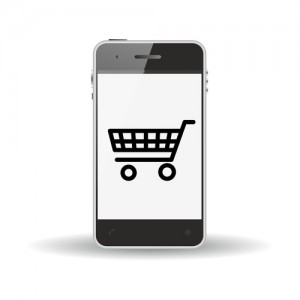Is mobile going to be behind all shopping experiences?
 Mobile, mobile, mobile, whether it’s for commerce, browsing, personalised offers or pre-ordering, it can all be managed by a mobile technology these days.
Mobile, mobile, mobile, whether it’s for commerce, browsing, personalised offers or pre-ordering, it can all be managed by a mobile technology these days.
Take Birds Eye the food brand, for example, it has stepped across to the restaurant sector recently via a pop-up eatery and it has put mobile technology at its core. As part of a social commerce project, the food brand is using mobile devices to interact with visitors about their meal. Diners at the restaurant use the mobile technology to pay for their meals, but not in cash terms. Instead they simply post a picture of their meal, taken via the mobile, on Instagram and tag it as BirdsEyeInspirations. The Picture House restaurant, as owner Inglo Group calls it, claims the restaurant is a world first and taps into the trend of people taking photos of their meals, and is timed to co-inside with Birds Eye’s new Inspirations food range.
Back in the retail sector, mobile marketing companies like Weve, are supporting retailers’ mobile conversions by encouraging people to use their phones in store. Weve is developing a range of mobile commerce solutions including mobile wallets and location based targeting, however it is well aware that it isn’t just about introducing new technologies. Sean O’Connell, director of product at Weve, says: “At the moment, a lot of brands are trying lots of different things and learning that it’s not actually about the technology; it’s about the proposition and how it makes the customer experience better”.
Meanwhile, Waitrose is testing using iBeacons that work alongside an app at its recently launched concept store in Swindon. The iBeacon sends in-store marketing messages to its customers that interact with the consumer as they enter the store or walk down an aisle. The new technology aims to improve the shopping experience and extend Waitrose’ relationship with customers beyond the check-out. Waitrose’s IT director Cheryl Millington said about the app: “This allows us to personalise the offer based on where people are in the store, making sure we send the right information at the right time and in the right context,” she said.
The supermarket is also developing several other apps – one to work as a “personal assistant” helping shoppers as they navigate the store, another that would allow customers to pre-order food and drink from its food and drink-to-go areas, and also a mobile payment app that could replace its self-scanning service QuickCheck. “We want to bring digital into the store and tailor our offer in a digital way to help the shopping experience. The idea is to fail fast or innovate and change based on feedback and then roll it out. This is not development of technology for the sake of it, it fits with the brand and what customers want,” said Millington.
Recently, ICM Research told Marketing Week that retailers are right to push apps for selling and purchasing, but that at the same time they should discount the mobile website. According to ICM, the mobile website is still very popular for browsing. Following a study of 1,300 people and whether they had interacted with a selection of stores via smart phone, Jamie Belnikoff, ICM Associate Director said: The results show that brands shouldn’t just focus on their apps. They’ve got to make sure that their mobile websites are fully optimised for mobile shopping too. But sales are much more likely to take place through an app than through a mobile website, so the challenge for brands is encouraging people to use their apps rather than the mobile website”.
In the words of Sean O’Connell, the interest now lies in how mobile can act as a bridge and provide opportunities to tie together the real world and the digital world.


No comments yet.